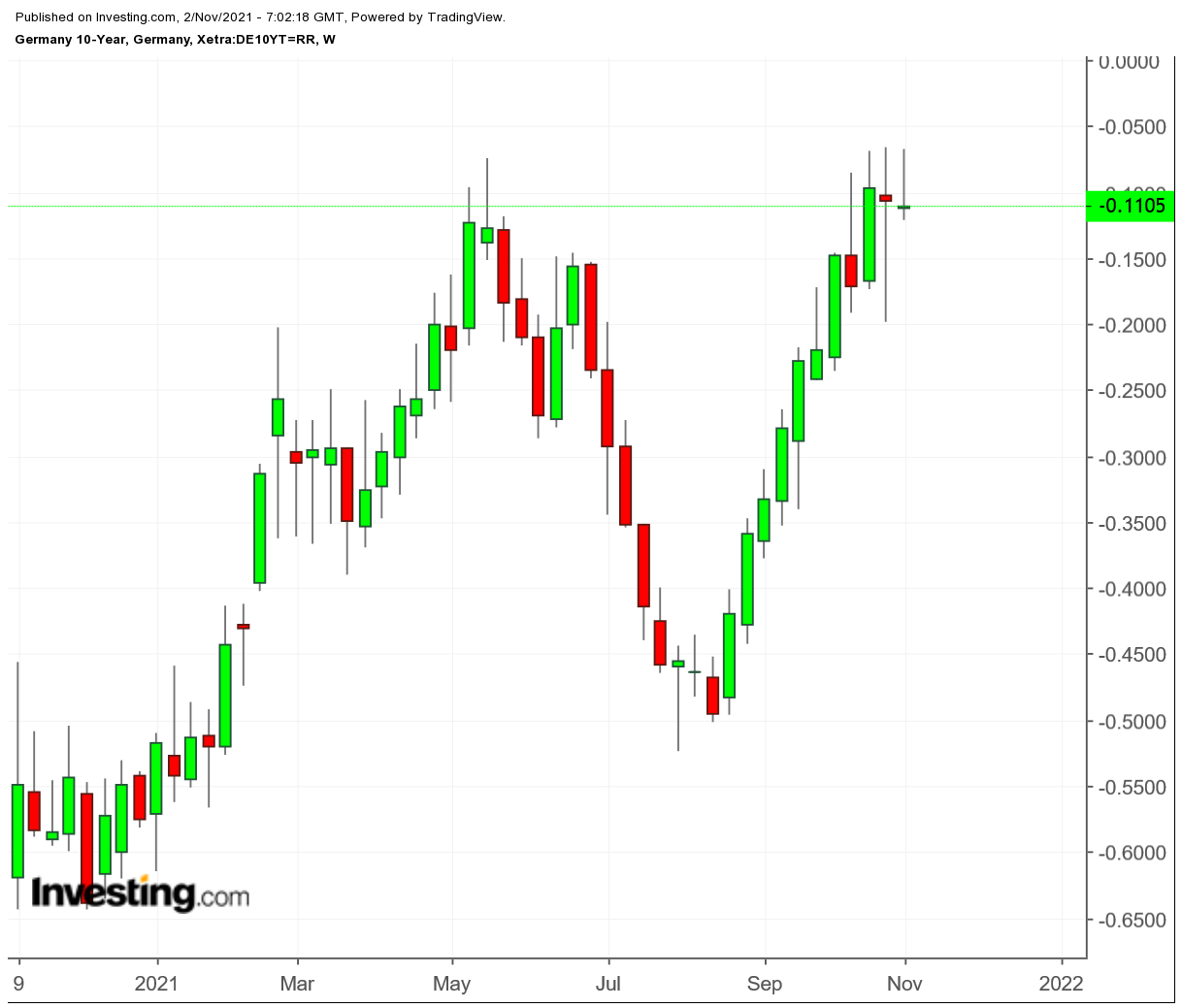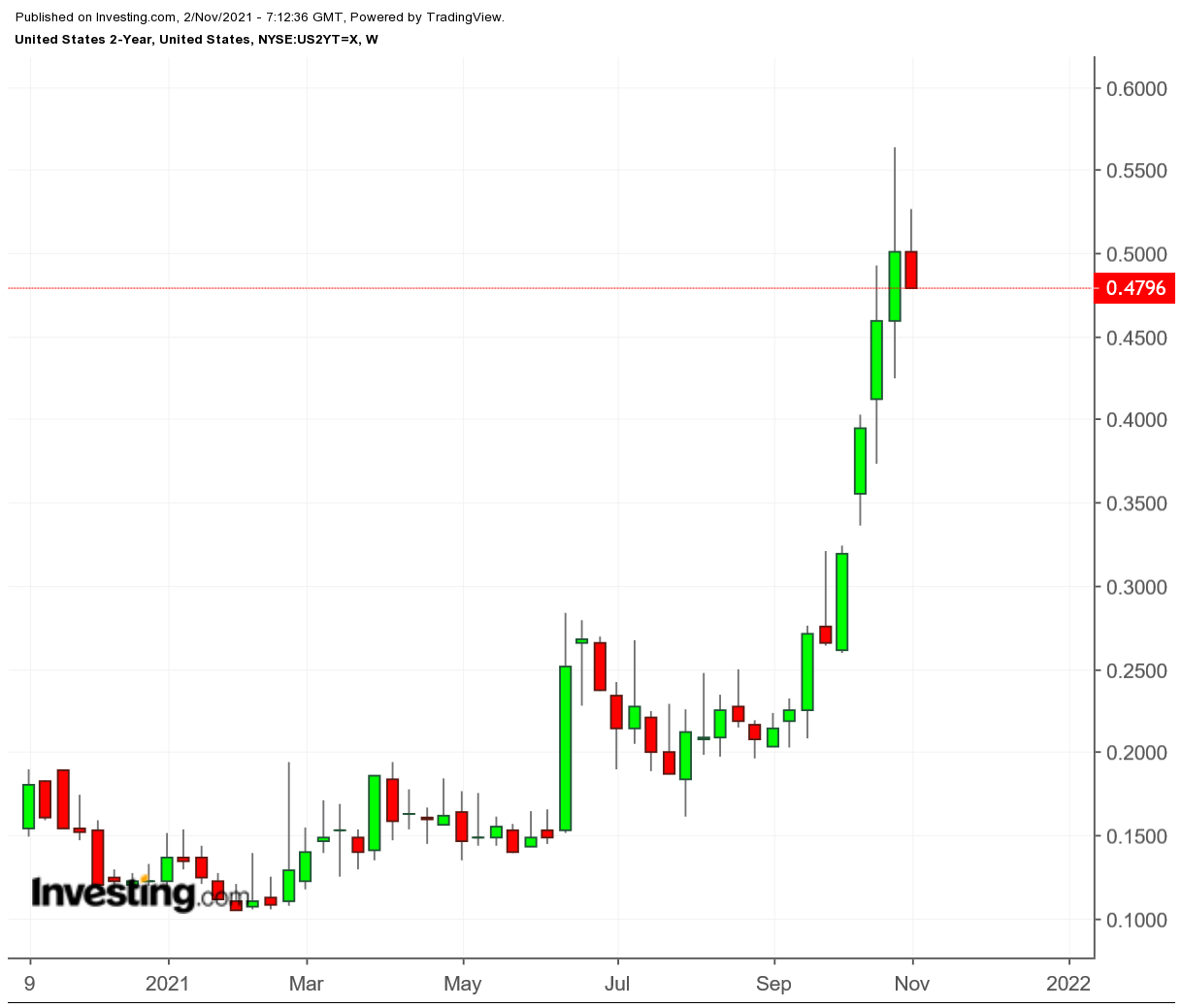Bond investors globally are leading the charge against inflation and forcing central banks to heed price increases that are not transitory per policymakers’ repeated claims, but proving to be persistent. Investors are selling bonds and pushing up yields as central banks shorten their timelines for tightening monetary policy.
Investors dumped Australian bonds last week, pushing the yield on the April 2024 government bond above 0.8%, far beyond the Reserve Bank’s target of 0.1%, as the central bank abandoned its efforts to hold the line.
In Europe, yield on the benchmark 10-year German bond reached its highest point in two and half years, hitting as high as minus 0.07%, compared to minus 0.5% in mid-August.

In May, when inflation started to rear its head, the yield rose to minus 0.1%, but then fell back. Now it is getting even closer to zero.
Yields on Italian and Spanish bonds rose even more steeply after European Central Bank President Christine Lagarde—while downplaying the dangers of inflation and market expectations for an interest-rate hike—said the ECB’s emergency bond purchase program would not be extended but allowed to run out in March.
Yield on Italy’s 10-year bond shot up above 1.2%, compared to below 1% early last week. Spain’s 10-year yield topped 0.6% in recent trading after sinking below 0.5% last week.
Italy faces increasing uncertainty with the looming presidential election in January. Prime Minister Mario Draghi would almost certainly win the vote of parliament if he decides to run for the largely ceremonial post. But that would entail choosing a new head of government, and it’s questionable anyone else could hold together Draghi’s fractious coalition.
By the same token, if he chooses not to run and the incumbent, Sergio Mattarella, doesn’t seek re-election, that poses another set of problems.
U.S. Yields Seesaw Between Worries On Growth, Inflation
In the US, yields on two-year Treasury notes soared above 0.5% last week, hitting their highest point since the onset of the pandemic, and stayed there in Monday trading, compared to below 0.2% in August.

Yield on the 10-year note is climbing back toward 1.6% after hitting above that mark last month, compared with 1.3% in September and 1.2% in August. Yields are see-sawing between worries about inflation and dimmed prospects for growth amid labor shortages and supply-chain disruptions. Inflation concerns appear to be winning.
Analysts see investors losing patience with central banks’ dilatory attitude toward inflation and challenging their assumptions about how transitory it will be. At the same time, the quick reduction of asset purchases—the Bank of Canada last week simply called a halt to bond purchases—is removing a price support.
The fact that investors are paying attention to what marginal central banks like those in Australia and Canada are doing indicates many feel the bigger central banks will have to follow suit. Others are not so sure, and think markets may be pushing too hard on yields.
But the bond sell-offs are taking their toll as those who kept faith with the central banks are suffering losses with the decline in prices. Highly leveraged hedge funds have been particularly hard hit.
Analysts cite the flattening yield curve, as short-term rates are rising faster than long-term rates and narrowing the gap between the two—contrary to the expectations of some hedge fund investors who anticipated long yields rising as the Federal Reserve prepares to taper its bond purchases.
